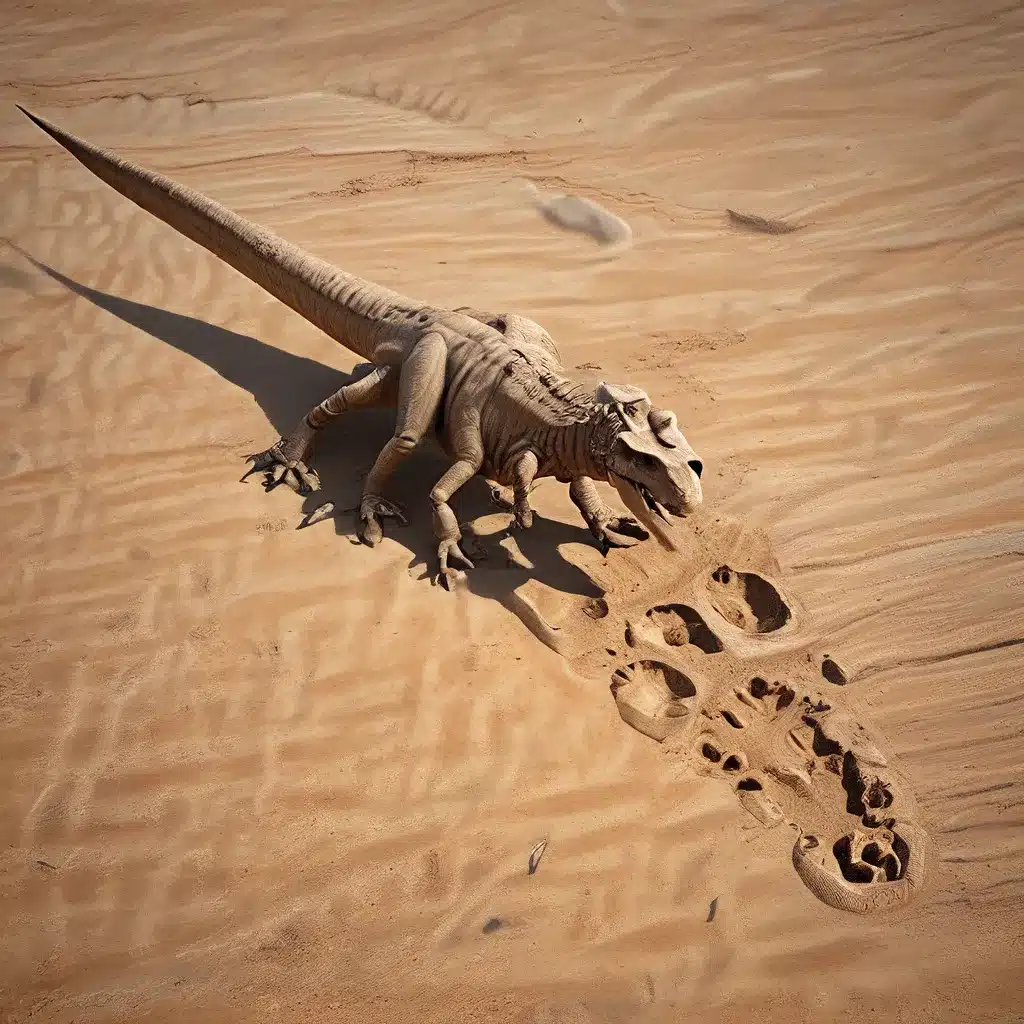
As we delve into the ancient past, the ground beneath our feet holds a treasure trove of secrets, preserved in the form of fossil footprints. These captivating imprints left by long-extinct creatures offer a glimpse into the dominance of dinosaurs, shedding light on their behaviors, locomotion, and the environments they once inhabited.
The Evolutionary Significance of Dinosaur Footprints
Fossil footprints have become invaluable tools in the study of dinosaur evolution and paleobiology. These preserved tracks provide a unique window into the lives of these ancient reptiles, allowing researchers to reconstruct their locomotor patterns, social interactions, and even the composition of their herds. By analyzing the size, shape, and distribution of footprints, scientists can decipher vital information about the anatomy and biomechanics of dinosaurs, as well as their migratory routes and feeding behaviors.
One remarkable example is the discovery of a dinosaur trackway in South Korea, which revealed the presence of a herd of sauropods – the largest land animals to have ever existed. The footprints, measuring up to 1.2 meters in length, suggest that these gigantic herbivores traveled together, potentially for protection or to share resources. Such findings not only enhance our understanding of dinosaur social structures but also provide valuable clues about the paleoenvironments in which they thrived.
Decoding the Mysteries of Dinosaur Dominance
Fossil footprints have also played a crucial role in unraveling the dominance of dinosaurs throughout the Mesozoic Era. By studying the distribution and relative abundance of different types of tracks, researchers have been able to reconstruct the ecological dynamics of ancient ecosystems, revealing the predator-prey relationships and niche partitioning that characterized these prehistoric landscapes.
For instance, the discovery of numerous theropod (meat-eating dinosaur) footprints in close proximity to those of herbivorous dinosaurs has provided evidence of the hunting behaviors and hunting strategies employed by these apex predators. Similarly, the identification of trackways that demonstrate herding behavior or cooperative hunting has shed light on the social intelligence and complex behaviors exhibited by certain dinosaur species.
Piecing Together the Puzzle of Dinosaur Diversity
Fossil footprints have also played a crucial role in uncovering the diversity of dinosaur species that once roamed the Earth. By carefully analyzing the size, shape, and unique features of these imprints, paleontologists have been able to identify different species and even distinguish between the sexes within a particular dinosaur population.
One remarkable example is the discovery of sauropod footprints in modern-day Bolivia, which revealed the presence of a previously unknown species of titanosaur – a massive, long-necked herbivore. The distinct features of these footprints, such as their elongated shape and the arrangement of the toes, provided valuable clues about the anatomy and locomotion of this new dinosaur species, further expanding our understanding of the evolutionary history of these magnificent creatures.
The Enduring Enigma of Dinosaur Footprints
Despite the wealth of information that fossil footprints have provided, many mysteries surrounding these ancient tracks remain unsolved. For instance, researchers are still grappling with the question of whether some footprints were made by multiple dinosaurs moving in coordination, or by a single individual. Additionally, the interpretation of certain trackways has led to ongoing debates among paleontologists, as they strive to decipher the true meaning behind these captivating imprints.
Furthermore, the discovery of unexpected or anomalous footprints has sparked new theories and hypotheses about the behavior and diversity of dinosaurs, challenging our existing understanding of these prehistoric giants. As the field of paleontology continues to evolve, the study of fossil footprints remains a vital and dynamic area of research, promising to uncover even more secrets about the dominance and legacy of dinosaurs.
Exploring the Native American Connection
Interestingly, the discovery of dinosaur bones and fossil footprints is not limited to the modern scientific community alone. Evidence suggests that Native American tribes may have encountered these ancient relics long before the arrival of European explorers. While their perspectives and interpretations of these mysterious remains may have differed from those of modern paleontologists, the interactions between Native Americans and dinosaur fossils offer a fascinating cultural and historical context to our understanding of these prehistoric creatures.
The Intersection of Archaeology, Anthropology, and Dinosaur Discovery
The study of fossil footprints and dinosaur remains is not limited to the field of paleontology alone. Researchers in the fields of archaeology and anthropology have also made significant contributions to our understanding of these ancient artifacts, exploring the cultural and societal implications of dinosaur discoveries.
By analyzing the context in which dinosaur fossils are found, archaeologists and anthropologists have been able to shed light on the ways in which ancient civilizations interacted with and perceived these mysterious creatures. This interdisciplinary approach has led to new perspectives on the role that dinosaurs played in shaping the beliefs, myths, and legends of various cultures throughout history.
As we continue to uncover and decipher the captivating stories preserved in the fossil footprints of dinosaurs, we are reminded of the profound and enduring impact these prehistoric giants have had on our understanding of the natural world and our place within it. The legacy of dinosaur dominance is far from over, as the ongoing exploration and study of these remarkable creatures promise to reveal even more of the secrets hidden in the sands of time.


